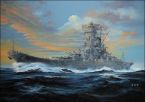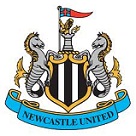Big B
Posts: 4870
Joined: 6/1/2005
From: Old Los Angeles pre-1960
Status: offline

|
Well,
The best known critic of the F4F-4 was John Thach (after his experiences at Midway). On the other hand Lt Cmdr Flately (XO of VF42, who fought the Coral Sea battle) thought the aircraft workable.
Both Flately and Thach together worked out F4F tactics after Midway and Coral Sea (according to Lundstrom). Flately disagreed with Thach over the wildcats capabilities and liabilities v the Zero, and Flately apearantly won Thach over to the POV that what ever the F4F-4 gave away in performance to the F4F-3 - it really wasn't enough to make a real difference in combat. Both agreed that the worst point of the F4F-4 was the 6x guns with 270 rds pr gun of the F4F-4, compared to the 4x guns with 450 rds pr gun of the F4F-3 (not for the added weight - but for firing time allowed). It appears at Midway, not a few F4F's were out of ammo too early - this appears to be the major source of anxiety between the two models (again according to Lundstrom). On the credit side of the F4F-4, it could carry drop tanks and therefore extend range, Pilots like Flately regarded range as the primary handicap of the F4F-3.
The remark that the F4F-4 "was a dog" is always taken out of context - it was made in reference to the F4F-4 with two wing tanks (Lundstrom 1st Team, page 443).
So to summarize, the F4F-4 did have a bit lower performance than the F4F-3, but not enough to make a difference in relation to combat with the Zero; the F4F-4 had greater firepower - but less trigger time (not a universally accepted virtue); and the provision for drop tanks provided a solution to the F4F's limited range problem(read - limited fuel, which translates into higher cruise speed, which translates into entering combat at high speed...THE biggest problem pilots identified after combat with the Zero - starting combat flying too slow); and folding wings allowed a major increase in the numbers available on board a carrier.
The Wildcat the pilots really wanted was the FM-2, with 4 guns and more ammo, provision for drop tanks (more fuel), folding wings, and most importantly - more horsepower which made maneuvering with the Zero a whole new ball game. test flights with captured A6M5's showed the FM-2 to more than hold it's own in climbing AND turning (besides the usual advantages of high speed roll and controllability, etc)... but it didn't arrive at the fleet until 1943.
quote:
ORIGINAL: niceguy2005
quote:
ORIGINAL: rtrapasso
quote:
ORIGINAL: ctangus
quote:
ORIGINAL: Big B
Reading sources like Lundstrom bears out the fact that USN pilots were addament about the loss of ammo.
IIRC they also didn't like the slower speed & apparent lowered maneuverability. Though admittedly my memory's a little fuzzy.
Yeah - according to Lundstrom, the USN carrier pilots hated the F4F4 - they felt it handled like a fully loaded torpedo bomber, they didn't like the lowered ammo, etc.
Notably - the US dropped the 6 mg armament when they went to the next improvement. The 6 x .50 cal mgs had been put in at the insistence of the Brits (for an order they placed), and the US wanted to standardize production so everything got 6 x .50 cal - for a while.
Very interesting thread. Curious though, isn't it, that now we sing the praises of the Wildcat for having armor and self-sealing fuel tanks, when, according to the reports of pilots, this seemed to count less with them than did the maneuverability.
< Message edited by Big B -- 10/3/2007 9:06:44 PM >
|
 Printable Version
Printable Version










 From what everyone has said , it seems the logical deployment is to put F4F4s on carrier (for larger numbers) and use F4F3s in VMF squadrons ashore (manueveability). I always find that I seldom have enough F4F4s and that deployment should help.
From what everyone has said , it seems the logical deployment is to put F4F4s on carrier (for larger numbers) and use F4F3s in VMF squadrons ashore (manueveability). I always find that I seldom have enough F4F4s and that deployment should help.













 New Messages
New Messages No New Messages
No New Messages Hot Topic w/ New Messages
Hot Topic w/ New Messages Hot Topic w/o New Messages
Hot Topic w/o New Messages Locked w/ New Messages
Locked w/ New Messages Locked w/o New Messages
Locked w/o New Messages Post New Thread
Post New Thread